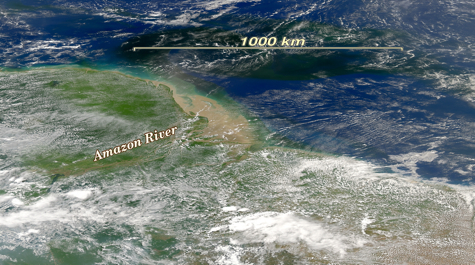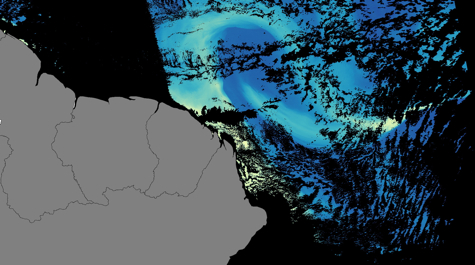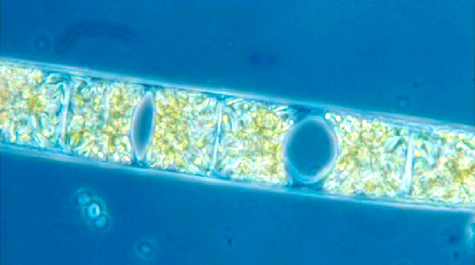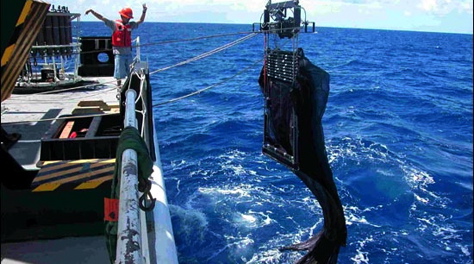ANACONDAS
Questions & Hypotheses
What sustains diatoms blooms in the Amazon River's nitrogen-poor plume, which extends more than 1,000 miles offshore? Why are pCO2 concentrations in the plume more than 150 ppm below atmospheric concentrations? Why does the biological pump seem to be so efficient there? The answers to these questions lie in the unusual and poorly understood symbiotic relationship between diatoms and diazotrophs (nitrogen-fixing microorganisms). We hypothesize that large tropical river plumes with low N:P ratios provide an ideal niche for diatom-diazotroph assemblages (DDAs). We suggest that the ability of these organisms to fix elemental nitrogen within the surface ocean is responsible for significant export of carbon in the Amazon River plume. Previous observations in the Amazon River plume during the NSF-funded PIRANA project helped reveal that blooms comprised of the endosymbiotic nitrogen-fixing cyanobacterium Richelia and its diatom hosts (e.g. Hemiaulus) were a significant source of new production and carbon export. Since this previous work focused largely on the sensitivity of DDAs to external forcing from dust and riverine inputs, the ecology of these organisms and the fate of their new production were largely unstudied. We now know that DDAs are responsible for a significant amount of CO2 drawdown in the Amazon River plume. Also, floating sediment traps at 200 meters measured 4-times higher mass fluxes beneath the plume than outside the plume. We hypothesize that this greater export is due either to aggregation and sinking of DDAs themselves or to grazing of DDAs by zooplankton.
Goal
Our goal in this project is to conduct a suite of field, satellite, and modelling studies of the Amazon River's freshwater plume to better understand the ecology of diatom-diazotroph assemblages (DDAs) and to trace the fate of carbon and nitrogen fixed by DDAs and other phytoplankton living in the plume. By examining carbon and silicate export from offshore surface waters, through the upper oceanic food web, the mesopelagic, and down to the deep sea floor, we will quantify the impact of the Amazon River on biological processes that control carbon sequestration and the implications of this regional processes on carbon, nitrogen and silicate budgets.
The project builds on previous research to quantify the
- distribution, nutrient demands, and activity of DDAs in the context of phytoplankton species succession,
- sensitivity of the CO2 drawdown to the mix of phytoplankton,
- grazing and aggregation processes contributing to the sinking flux,
- composition of this flux, and
- the proportion of this material that reaches the seafloor.
This effort represents a measure of carbon sequestration and pump efficiency. Our ecological model will be used to place observational results from field studies and satellites into the context of the larger Atlantic basin with tropical climate variability on interannual and longer time scales.
Collaborators
This project is a collaboration between the
- Bigelow Laboratory for Ocean Sciences
- Georgia Tech
- San Francisco State University
- University of Georgia
- University of Maryland Center for Environmental Sciences
- University of Southern California
- Virginia Institute of Marine Science
Funding
Funding for this project is provided by the National Science Foundation's (NSF) Division of Ocean Sciences.





